Page #2 of Little Salmon River Fresco. 7-9-4, 9:00 AM, Giornate #5, start wetting the wall and making preparations.
TIP: Don't use the rising lime pressed out the mortar's aggregate to fill depressions while you are smoothing, it will shrink, you will still have the depression and it can chip off. TIP: Allow a little lime to overlap the previous giornate's cut by at least a 1/6th of an inch, no sand in the overlap. The fresh lime will adhere and can be colored and completely hides the joint. 3:30 PM, giornate #5 laid, 3 hours, 35"x17". I'll be using limewater as the medium. PR122 quinacridone magenta, PY150 (same as) PY108 nickel complex Indian yellow and PB15 Phthalocyan as the primary triad. I've added Naples yellow and PY35 cadmium yellow lemon zinc sulfide. The first three giornates will show it is possible to make these added colors with only the original primaries. I didn't need the Naples yellow. 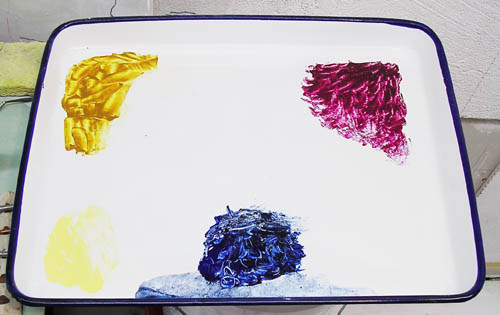
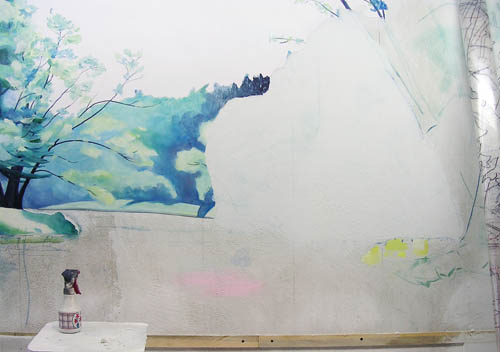
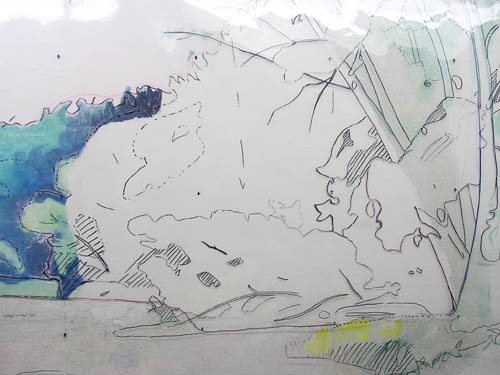
5:45 PM, I painted over the scribed lines and troweled the giornate smooth again. This is the best and least time consuming way to transfer patterns and lines if you don't pounce the lines. Michelangelo didn't have clear plastic to work with. 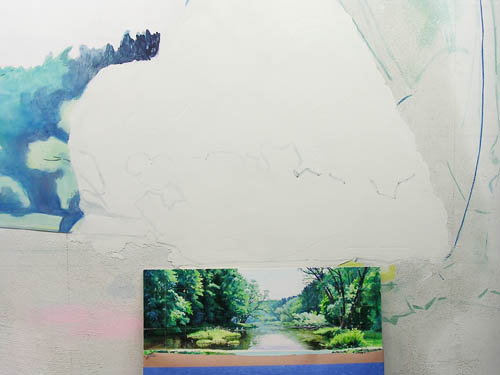
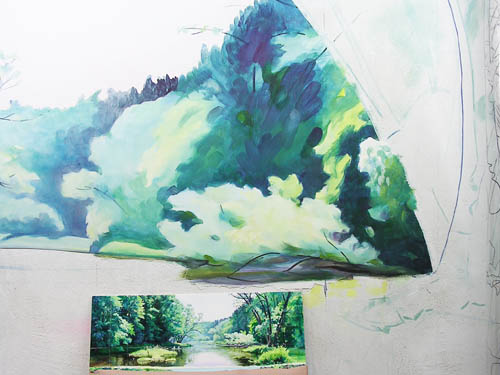 7-10-4, Giornate #6, lime 1:1 crushed limestone.
TIP: Wash your brushes first in alcohol, it breaks down acrylic media, synthetic pigments and lime. Vinegar will also break down lime. Wash your brushes in soap and water secondly. If you want to prove this to yourself, wash out a fine grain synthetic pigment in soap and water then in isopropyl alcohol and see the build-up you missed. Here is a comparison of the color of the wet lime and with different aggregates. First 1:1 lime and crushed white lime or white marble, than 1:1 Lime and small white sand, than 1:2 Lime and tan sand.
TIP: Wet the brush and shake it out, fully load the brush with your paintable consistancy of lime. Add pigment to turn the lime into that new pigment's translucent color and add titanium white to the tint you want it to be dry. The ancients couldn't do that because their color system was based on lead white which turns brown in lime as do all other white minerals. So, tinting with titanium white after saturating the pigment with lime is the final buon fresco color. These photos show the colors of mortar wet and dry. Small white sand is on the bottom right of the top left photo, and bottom board. 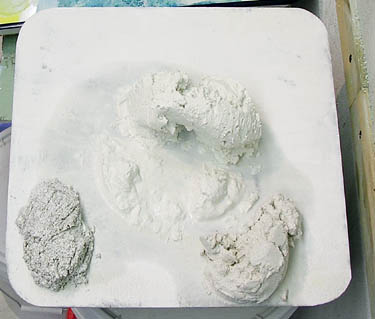 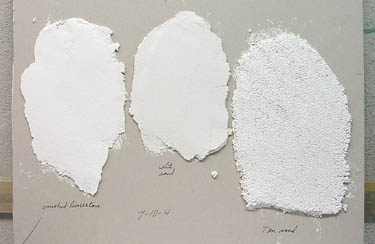 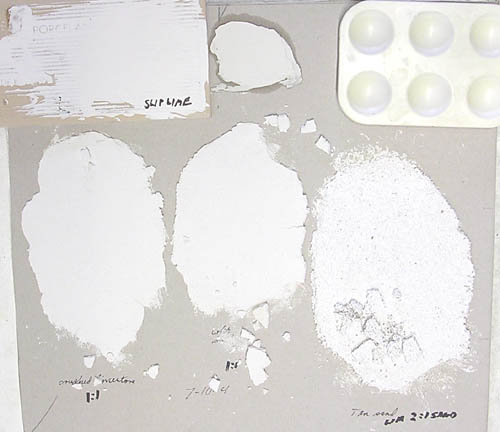 Each mortar is now white, so use the whitest aggregate to paint on.
5:30 PM, I'm ready to start, the wall has been kept wet since 11:00 AM. First I'll put on the the gloves and protective glasses then apply the wet intonaco slip with a brush.
TIP: Remember, lime and water don't mix, lime just uses water to suspend itself. The water floats on top of lime. Water just spreads the lime out and gives you a less lime concentrated mortar and spreads the sand out less compactly because the lime is expanded. Those components together make a weaker mortar. Take a ball of slaked lime and squeeze some water from it. The wall holds this water a long time under the carbonate crust. You can remove this crust, re-lay the surface and still bond and paint into the moist lime. As you are adding pressure to the giornate's final surface while making it smooth, wipe your trowel clean if it gathers pure lime paste. This will make the mortar stronger since lime is the weakest link.
9:15 PM, Transcribed, here is the cartoon in place.
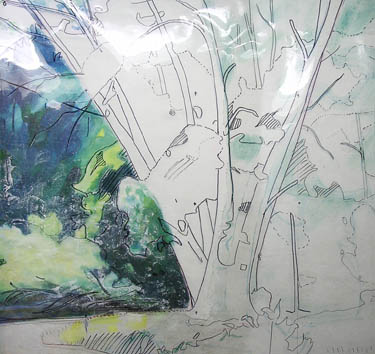
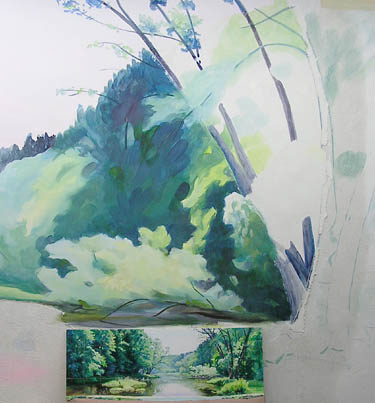 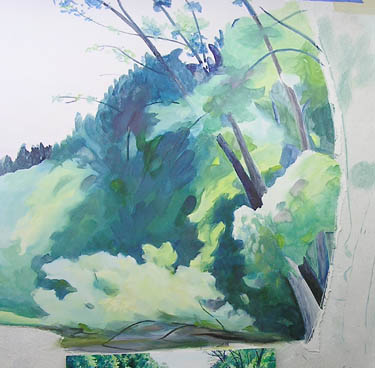 11:00 PM, basically I'm through with the soft wash brushes and onto the bristle brushes, 2nd photo. 100% coverage, now I'm getting somewhere. The rest is big lights loaded with lime and darkest darks.
12:40 AM, finished giornate #6. I trimmed off the excess mortar beyond the cut line and wet the brown coat again up to the new giornate. I'll wet everything again when its safe, maybe in another 20 minutes. Love my new pressure sprayer. 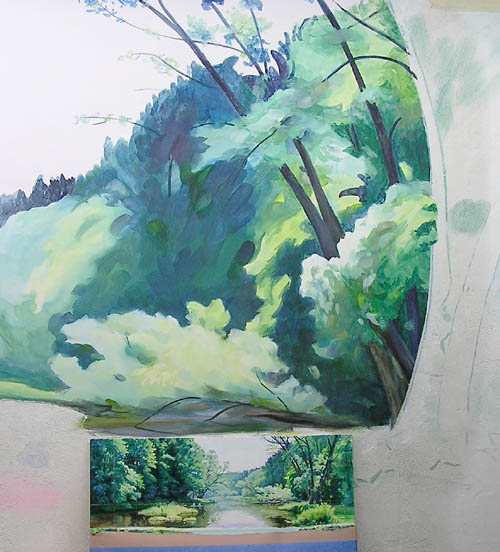 Compare the total times of two different size giornates.
A wooden stand alone frame to hang the transparent cartoon would have been nice.
12:00 noon, Here's the brown coat and the intonaco slip applied. 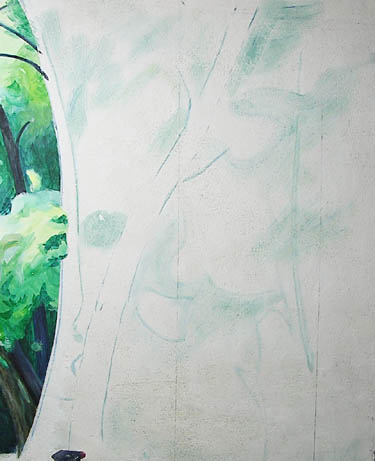 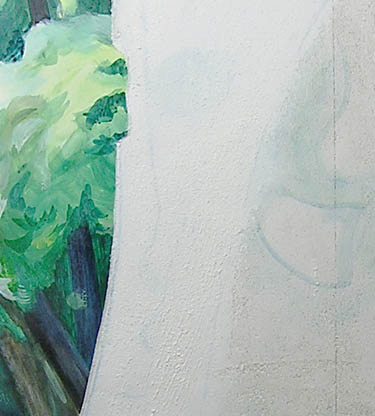 Here are the second and the third layers of intonaco.
When you take mortar out of your pronto bucket after spilling out the lime water, blot it on paper towels to remove any excess water.
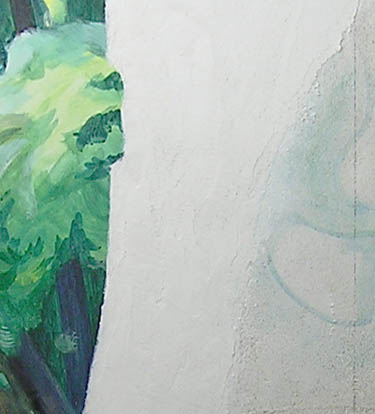
TIP: This is definitely the physical pallet of choice. Don't get sand in your palette. Strain of floating carbonate from your limewater with a coffee paper strainer placed in a 5 inch, hand held strainer. Strain all your plaster before adding sand with the same strainer, just fill it and tap it on the topside of the bucket. TIP: Use a turkey baster to remove small supplies of limewater, it gets the clean limewater that's under the floating carbonate. 4:30 PM, finished the add on. I put up the cartoon and realized I had changed it from what the wall was drawn to and had to add a new area at the bottom.
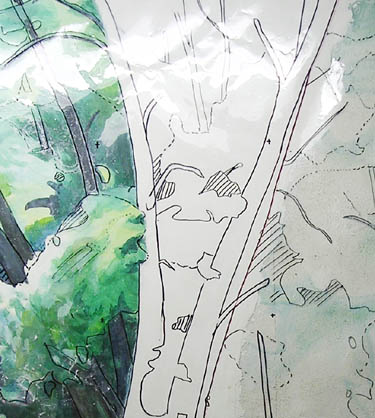 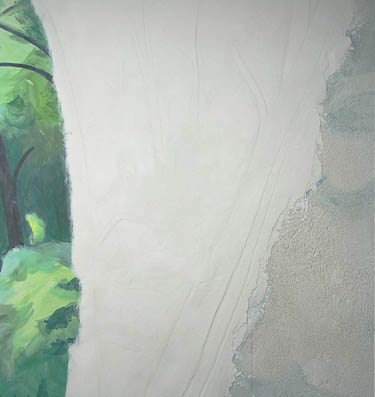
I'm using my normal primary and secondary palette in this giornate. Green and magenta opposition colors. Royal blue or Senopia's Ultramarine blue and burnt umber are also dark complements (brown is dark yellow, yellow is the opposite of blue) used for morning painting. Complement pigment color link.
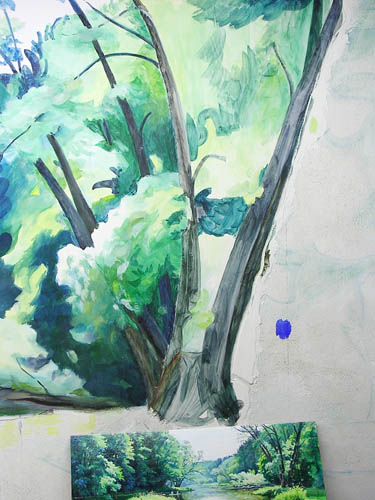 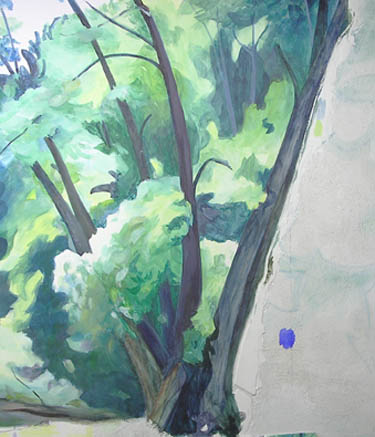
10:40 PM, I'm finished with the soft hair brushes. Now for the 3/4" fitch bristle, lime paste and pigment.
11:10 photo 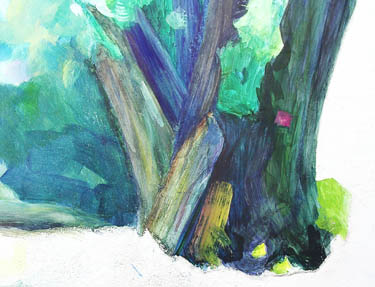 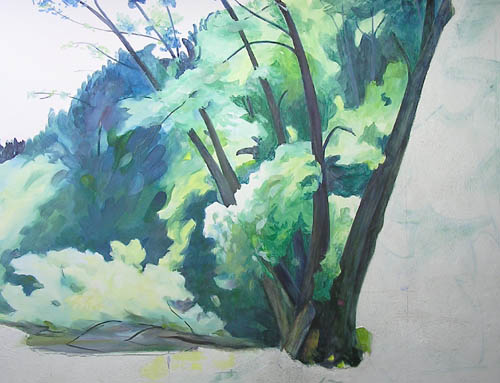
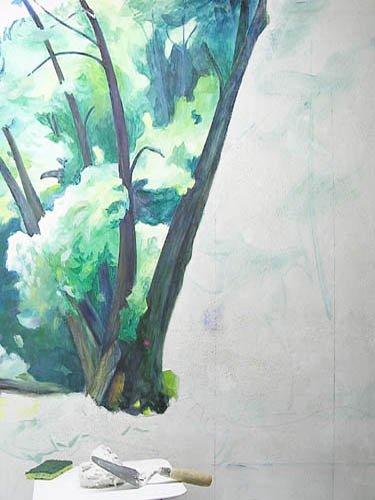 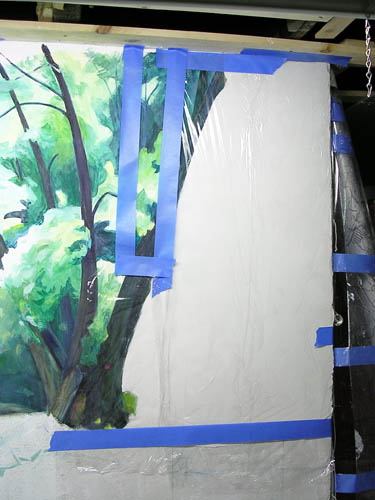 8:15 PM, the top layer is on, I have to wait before adding pressure to the surface.
7-15-4, 9:00 AM. Good morning world! I feel fine. First thing I took the plastic wrap off the giornate. Try, real hard, not to let the tape touch any painted surfaces, the paint comes with the tape. Press on some new lime only over the area. I had two small white tape spots, no problem, mainly because I'm keeping the whole mural wet and added some lime paste to the area before repainting it. 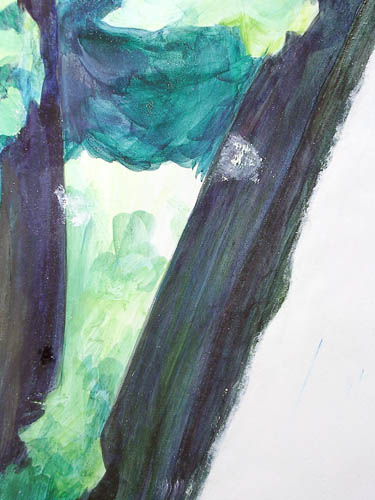 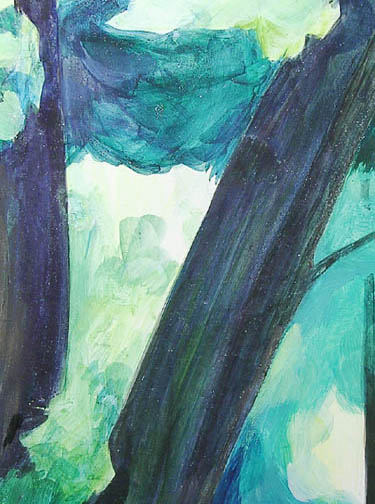 I used my homemade plexie glass blade trowel. After wetting the wall twice I smoothed it down, it really smoothed down well. When it's dull again I'll transfer the cartoon, go over the lines with pigment and press it all smooth again. 10:45, Use limewater to keep the intonaco wet. I'm keeping it moist. Yesterday I made some lime water. 2 quarts of wet lime and a gallon of water in a 5 gallon bucket. Today I poured off the limewater. 24 hours later and all the lime had settled to the bottom.
The vertical board on the left has the rest of the cartoon wrapped on it. 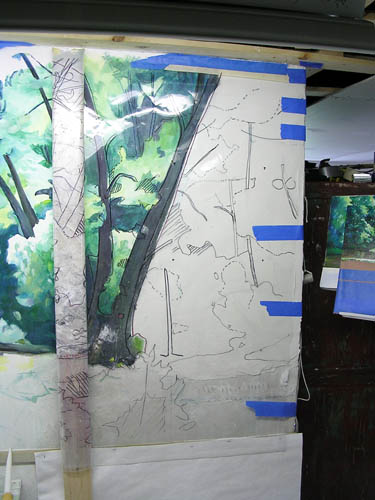 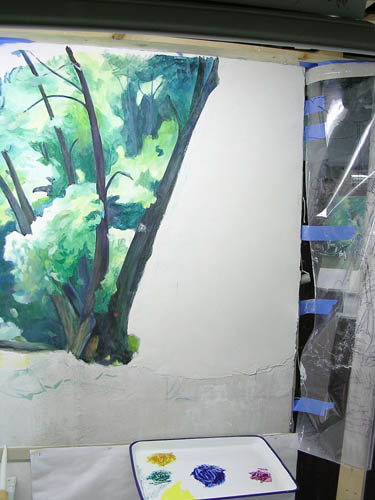
1:30 PM, 100% coverage. I've used a 1.5 hike goat brush so far. Goat hair is softer then pig hair and doesn't move the surface. 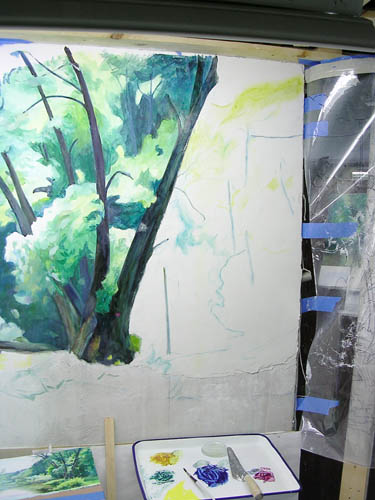 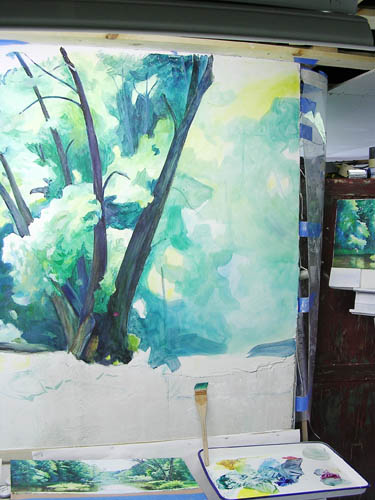
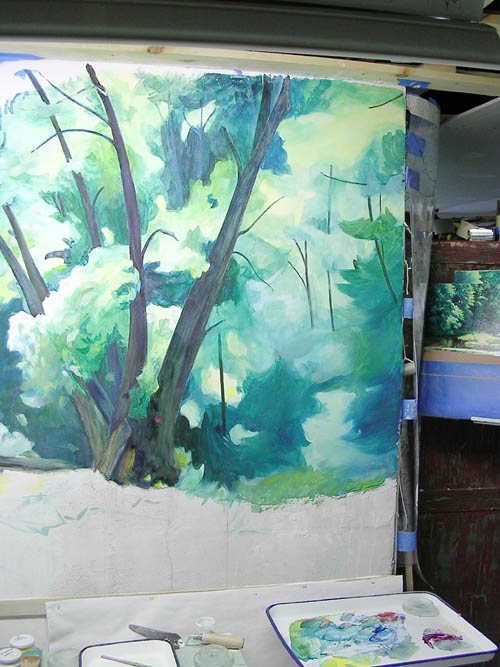
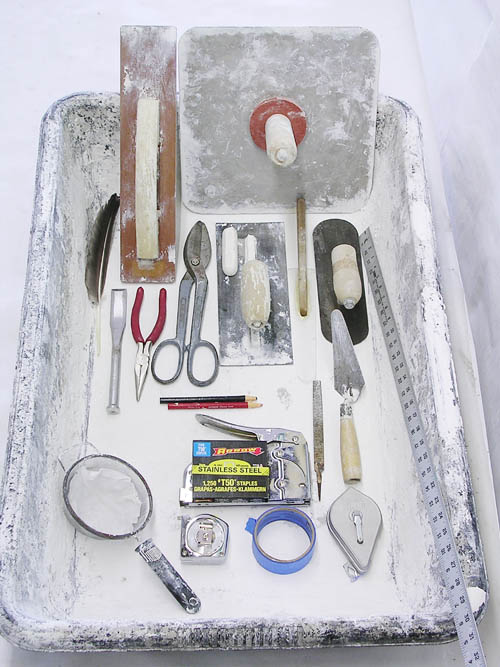
|
NEXT FRESCO PAGE, #54 Large mural page cont.3
PREVIOUS FRESCO PAGE, #52
Starting 82X155 buon fresco mural
